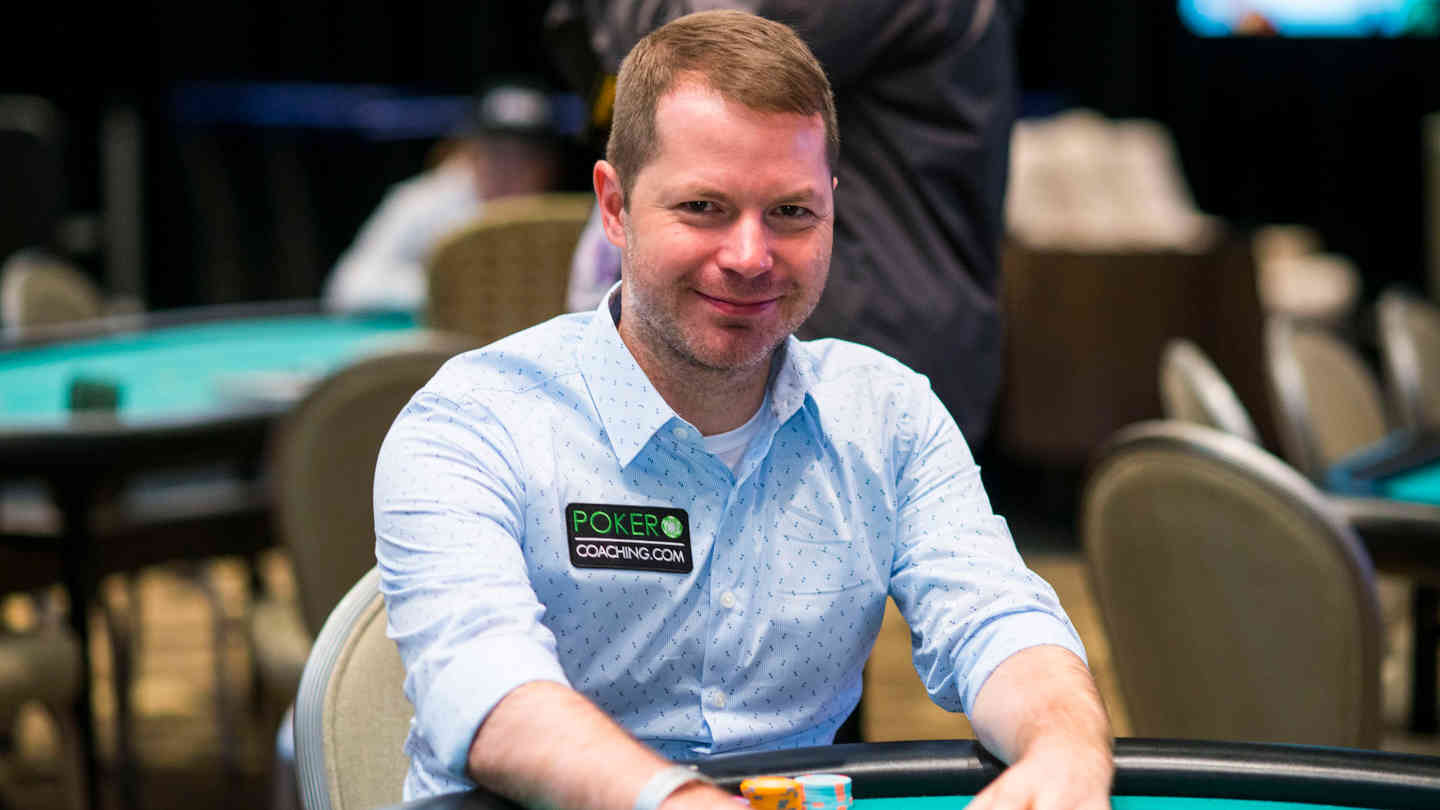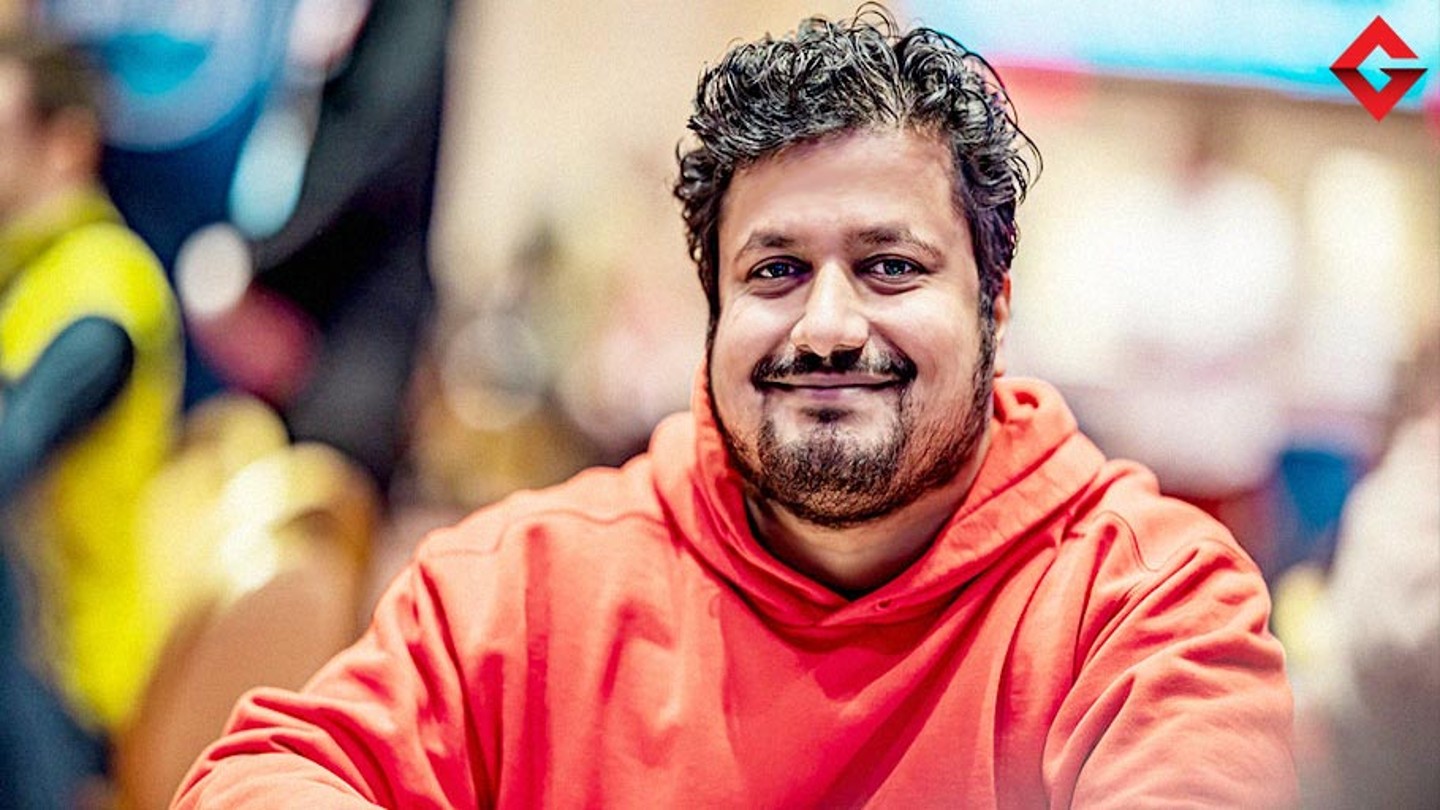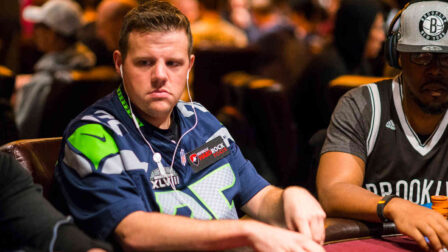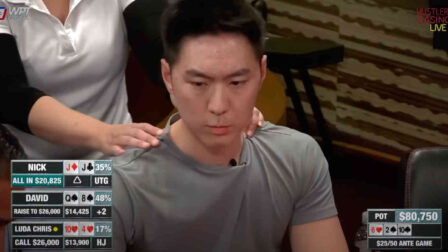Deep Stack Poker Strategy – Do You Know How to Adjust In Tournaments?

12 minutes
Last Updated: March 12, 2023
When you think about deep stack poker, tournaments aren’t the first thing that comes to mind. For the most part, deep stack play is reserved for cash games, where it’s perfectly normal to sit with 200, 300, or even more big blinds in your stack.
However, understanding the deep stack poker strategy is very important for MTT players as well.
While knowing your shove-fold ranges may be arguably more important, there will be plenty of spots where you’ll be playing deeper.
This applies in particular to the early levels of a tournament, as everyone starts with plenty of big blinds. Knowing how to play correctly during these early levels can give you a significant edge over the competition, as players tend to make some pretty big mistakes in this phase.
Another situation where you might be playing deepstack poker in an MTT is as you progress and accumulate chips.
If you find yourself sitting with a big stack, most other players at your table might be short, but there will usually be one or two other large stacks to worry about.
In this article, I’ll give you some actionable deep stack poker tournament strategy tips to implement into your play.
By the time you're done reading, you'll have a much better understanding of what things to pay attention to in these scenarios, what are the biggest mistakes to avoid, and how to extract the most value in deep stack tournament situations.
Short Stack vs. Deep Stack Poker
The first thing to discuss is the difference between playing deep vs. playing short. Most cash game players know a lot about this topic, but those who prefer tournaments are often not too familiar with deepstack poker.
To put it in the simplest of terms, playing deep is much harder and more demanding.
When you're sitting on a short stack in an MTT, most of your decisions will revolve around preflop. With 10 – 25 big blinds in your stack, there isn’t much room to play poker.
The idea is to get as much money into the pot before the flop when you believe you’re ahead.
As you get deeper, this starts to change. You’ll have to play across multiple streets and make multiple decisions over any individual poker hand.
This means there is much more room for mistakes, which can be quite costly. The more blinds you have in your stack, the bigger the margin for error is.
This is precisely why you need to master the deep stack poker strategy if you aspire to become a good tournament player.
Playing an extremely conservative style when you're deep and waiting to get into the shorter stack territory that you're more familiar with will hurt your winning chances.
Truth be told, playing deep stack poker can be a bit intimidating at first. You’ll find yourself in many uncomfortable spots along the way.
But, as you learn and become better, that feeling will go away, and you’ll start to love the strategic aspects of it all. If you know what you’re doing, playing deep is much more fun!

Deep Stack Poker Strategy Adjustments
One of the old sayings in poker is that “tight is right,” and it translates well to tournaments. Many players don't have the patience to fold a hand after hand, and after a while, they'll get anxious to play. This will allow you to pick up some easy poker chips when you do pick up the goods.
If you’re sitting with 30 – 40 bigs in your stack, there is not much reason to stray from this strategy. In most fields, there’ll be more than enough opportunities to pick up chips by waiting for good hands.
But if you are in a situation where you have 100+ big blinds, there is no reason to only play the absolute premiums, especially if you are one of the better players at the table.
Tight may be right still, but it won’t be the most profitable approach.
Instead, you want to try and get in the mix with some speculative hands that have the potential to flop big. While you don’t want to be set mining with a short stack in an MTT, your small and middling pocket pairs become much more powerful in deep stack poker situations.
You have the required implied odds to see the flop and try to stack someone overplaying their big pocket pair.
Players will often make the mistake of folding their speculative hands in deep situations because they perceive someone as a tight player. If you know someone is a very tight player and only plays the premiums, this means their range is capped when they 3-bet you.
With plenty of chips behind, you have a lot of reason to see the flop and get yourself in a spot where you can play the hand perfectly.
And, if they make the mistake of overplaying their hand, you might end up picking a huge pot.
The general rule of thumb is that you don't want to be committing your entire stack in these situations with a relatively weak hand, and even pocket aces can be a weak hand in this scenario.
While it's perfectly normal to stack off for 30 bigs with a big pocket pair, you don't necessarily have to lose 150+ big blinds. Poker is a situational game, and you need to adjust your play as things change.

Building Pots & Pot Control
The two concepts that you’ll need to adopt and understand as you learn the deep stack poker tournament strategy are:
- How to build pots
- How to control the size of the pot
While they may seem mutually exclusive, these are actually two sides of the same coin. Sometimes you’ll start a hand with a plan to build a big pot, but then you’ll realize it’s time to pull back and go into the pot control mode.
Building a pot seems easy enough. You just need to throw some chips in. But the idea is to build the pots in favorable situations, which usually entails several important factors:
- You have the position
- You have a hand that can flop a strong hand or a big draw
- There are enough chips to play for after the flop
The first factor is easy enough to understand, and I won't spend too much time on it. By now, you probably know the importance of position in poker.
The deeper you are, the more important it becomes, as your decisions have more serious consequences. Hence, being the last to act is a huge advantage.
The second aspect is choosing hands to build pots with. In deepstack poker, you can definitely afford to bluff more and 3-bet preflop with wider ranges. But you should still do it with hands that have the potential to flop big.
Small suited aces, for example, are great candidates because they can make straights and flushes and land you a huge pot.
Finally, you need to make sure there are enough chips to play for. Chip stacks fluctuate all the time in tournaments, and players often make the mistake of focusing just on their stack.
Before you pull the trigger, make sure that your opponent is deep as well. It doesn't matter that you have a massive stack if they only have 20 big blinds behind.
So, you start the hand with the idea of building and winning a big pot, but you can’t influence what will come on the flop.
In deep stack scenarios, you need to be very aware of the board texture and how it correlates with your opponent’s perceived range. If you flop a marginal hand or a weak draw, you don’t have to go all out and empty the clip.
Using the above example, you 3-bet a small ace, and the flop comes ace-high with no other draws. This is a perfect scenario where you want to exercise pot control.
Your hand is not strong enough to go for three streets of value, so checking back on the flop or the turn is the way to go. Bloating the pot with week holdings in these scenarios will not end up well.
Extracting Value
What do you do when you do flop your set or a big combo draw? How can you make the most money in these situations?
Well, the beauty of deep stack poker is that it allows you to put a lot of pressure on your opponents. With big hands, you shouldn't be afraid to make the big bets and put them in tough spots.
With a strong made hand or a big draw, you have the necessary mathematical equity, but by betting, you're also adding a lot of fold equity to your bottom line.
This can be a scary proposition in freezeout tournaments, where you only have one bullet, but you shouldn't be afraid of busting. Unless you win the tournament, it will happen eventually anyway, so at least let it be on your terms if it comes to that.
Of course, you should be aware of who you’re up against and adjust your strategy accordingly, especially in live tournaments.
If you have someone pegged as a calling station, you want to go for the maximum value when you have the goods. Make them pay the price for going to the showdown.
By the same token, when you’re on a draw against this player type, exercise some pot control and wait until you make your hand to go for value.
Deep Stack Poker Tournament Strategy: The Small Ball Approach
Another great deep stack poker strategy is the small ball approach, and it works very well when you have a lot of chips to work with. You might know that this is Daniel Negreanu’s favorite approach, and it's worked pretty well for him over the years.
The basic idea behind this strategy is to see as many flops as possible while controlling the size of the pot.
Instead of bloating the pots, you’re playing in many smaller ones, looking to slowly grow your stack as the tournament progresses.
This poker strategy works especially well when you’re up against weaker opponents. You’ll have a much better idea of where you’re at after the flop, so you’ll often get to dictate the pace of action.
You can still win some big pots with this strategy, but the main idea is not to bloat the pots before the flop but instead focus on your post-flop skills to outplay your opponents.
The small ball approach to playing a deep stack in poker tournaments can be highly profitable, but I'd say it's better suited for more experienced players.
While it may seem like a lower-variance route, keep in mind that this strategy will have you play many pots, and even a big stack can be depleted fairly quickly if you're not sure what you're doing.
You can definitely try and experiment with it, but be prepared to make some wrong decisions along the way. This isn’t necessarily a bad thing, as you’ll learn from the experience, but don’t try to get too fancy, especially in tournaments with quality players in the field.

Switching Between Short & Deep Stack Poker Strategy
As mentioned earlier, things are very fluid in poker tournaments. You could be playing deepstack poker for a couple of hours and, after just one big hand, find yourself sitting on a relatively short stack.
That's just the nature of the beast and something even the best poker players in the world have to deal with.
The most important thing here is to always stay focused on the situation and quickly switch between the gears.
Players will often forget that they had just lost a big hand are no longer playing deep stack poker. They’ll continue to play the same strategy they had been playing up to that point, but the problem is, it doesn’t work when you don’t have a big stack to back it up.
As soon as your stack falls below the 50 big blind mark, you’re definitely no longer in the deep stack category.
You need to change your playing style accordingly because what happened in the past is not relevant. If you can double up and get to a big stack once again, you can switch gears.
It may sound like a redundant piece of advice, but over the years, I've seen many players fall victim to this very mistake.
By the time they make the mental switch, they'll have lost additional 10 or 20 blinds they had no business losing, and all of a sudden, find themselves in the red zone. You can't play deepstack poker if you aren’t actually deep.
Final Thoughts on Deep Stack Poker Tournament Strategy
Deep stack poker is probably the hardest poker variant to master. It requires deep focus and concentration through a hand as every decision matters, and the biggest decisions come late in the hand, on turns and rivers.
You can't afford to let your guard down at any point.
Building your experience and learning how to play with deep stacks will take time. If you do it only by playing tournaments, it can take you a little while, especially if you’re a live player.
There are only so many tournaments you can play, and you’ll only spend a limited time playing deep.
A good way to improve your deep stack poker strategy is by playing cash games. You don’t necessarily have to play very high and put your bankroll at risk.
Your main goal is to become more comfortable in spots with deeper stacks, and you get that in cash games all the time, as you’re basically never under 100 big blinds deep.
Another way to go about it is by signing up with one of the poker training sites and learning from the best. There are several quality courses that can help you with this particular topic, and it is probably a much more time-efficient way of doing things.
Either way, if you want to be a well-rounded tournament player, you’ll need to learn how to play with deep stacks at some point. Hopefully, the advice in this article will come in handy and point you in the right direction, but there are no magic shortcuts in this game.
There is a fairly steep learning curve involved, and you have to be fully prepared to tackle it to continue your growth as a player.


















